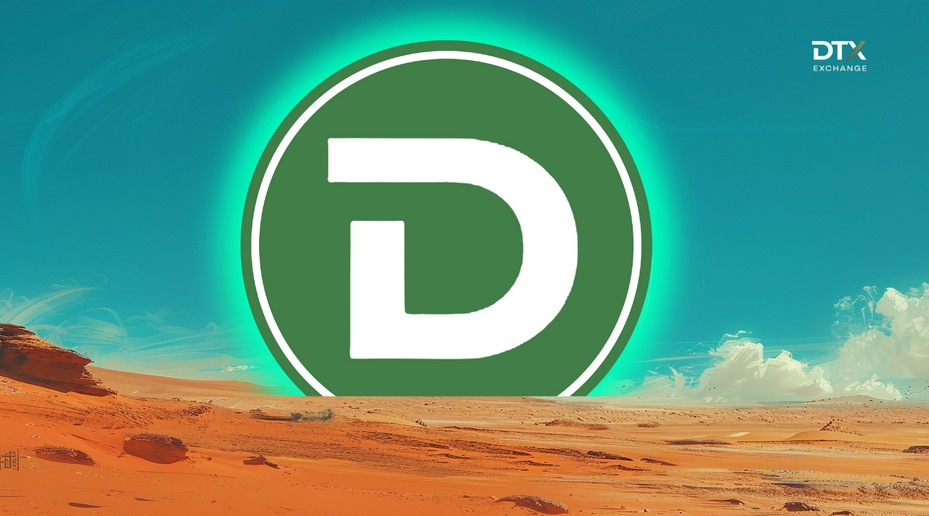DeFi
Understanding the Pros and Cons of Upgrading Smart Contracts in DeFi

The smart contract proxy’s upgradability allows developers to update the logic of deployed smart contracts while preserving the contract’s state and address. This provides some flexibility to fix bugs or add features, but also introduces potential risks.
Smart contracts, self-executing agreements on blockchain networks, traditionally function as immutable code once deployed. This immutability is a cornerstone of trust in blockchain technology, ensuring that the terms of the contract cannot be unilaterally changed. However, the inability to modify contracts after deployment can pose challengesmainly when bugs are discovered or improvements become necessary.
Ability to upgrade proxy in smart contracts
The proxy upgrade addresses this limitation by introducing a two-contract system. One proxy contract stores state and holds user funds, while a separate logical contract contains the actual functionality. The proxy delegates function calls to the logical contract, which can be replaced with an upgraded version without changing the proxy address or disturbing the stored data.
This approach offers significant advantages. Developers can fix vulnerabilitiesimplement new features and optimize performance without disrupting user interactions or requiring fund migration. Major DeFi protocols including Compound, Aave, and Uniswap V3 have adopted scalable contracts, leveraging this flexibility to improve their platforms over time while establishing themselves as relatively trustworthy entities through a combination of rigorous security measures and transparent operations.
These protocols have implemented comprehensive security practices, including extensive audits, formal verifications, and ongoing bug-hunting programs. Their smart contracts are open source, allowing for public review and verification of functionality. Additionally, they have adopted decentralized governance systems in which token holders can participate in decision-making, improving transparency and reducing the risk of unilateral changes that could harm users.
Their proven track record further reinforces the reliability of these protocols. They have been operating successfully for long periods of time and manage billions of dollars in assets. They are constantly updating and improving their systems based on community feedback and changing market conditions. Robust monitoring and alerting systems and detailed incident response plans demonstrate their commitment to security.
Additionally, while they operate in a nascent space, their regulatory compliance efforts add another layer of credibility from a regulator’s perspective. The high liquidity of these protocols also contributes to their resilience against certain types of attacks and market manipulation. However, no system is entirely risk-free, and users should always exercise caution and conduct due diligence when interacting with a DeFi protocol.
Risks associated with scalable smart contracts
The ability to modify the logic of smart contracts introduces new vectors of potential exploitationThe risk of centralization emerges as a major concern, with upgrade capabilities often controlled by a small group of administrators or governance participants. This concentration of power can be seen as contrasting with the decentralized ethos of many blockchain projects when not coupled with transparent DAO practices.
Malicious upgrades represent Another potential threat. In the event of a compromise or bad faith act, administrators could theoretically modify contract logic to siphon off user funds or manipulate protocol operations. While governance processes and security measures aim to mitigate this risk, this possibility remains a point of contention within the community with the rise of cybercrime. Sophisticated phishing scams using AI.
Technical vulnerabilities in the upgrade process itself present additional dangers. Mistakes during upgrades can result in loss of funds, data corruption, or contracts becoming inoperable. The complexity of proxy models increases the attack surface, potentially introducing subtle bugs that can go unnoticed until exploited.
How to Interact with DeFi Safely
For users navigating the DeFi landscape, identifying and evaluating scalable contracts becomes crucial. Examining the contract code for proxy models, such as OpenZeppelin’s, can reveal scalability features. Protocol documentation often reveals upgrade capabilities, though users should be aware that this information is not always displayed prominently.
Evaluating the security of evolving contracts requires careful consideration of governance structures and upgrade processes. Upgrade lockout times allow users to react to proposed changes. Multi-signature controls over administrative functions distribute power and reduce single points of failure. The reputation and track record of the protocol team provide additional context for assessing trustworthiness.
Risk-averse users when interacting with upgradeable contracts may be advised to limit exposure and long-term storage of large amounts in these systems. Actively monitoring upgrade proposals and participating in governance processes, where possible, allows users to stay informed and potentially influence protocol decisions.
The debate over the scalability of smart contracts reflects broader tensions between innovation and security, flexibility, and immutability in the blockchain space. While scalable contracts offer powerful tools for protocol development, they require users to trust human systems rather than relying solely on immutable code.
Finding the right balance between scalability and security remains a major challenge. Users must remain vigilant and carefully assess the risks and benefits of interacting with scalable systems. Self-sovereignty comes at a cost: security costs and risks are borne by the end user. In traditional finance, these costs are borne by centralized organizations such as banks and financial institutions. This is precisely why “bank-grade security” is the term used to define high-end security systems.
Self-protection means that the responsibility lies with users, and traditional laissez-faire attitudes toward security and risk are incompatible with Web 3.
To support this, developers and protocol teams are responsible for implementing robust governance mechanisms and transparent upgrade processes to maintain user trust.
Mentioned in this article
Latest Alpha Market Report
DeFi
Cryptocurrency and defi firms lost $266 million to hackers in July

In July 2024, the cryptocurrency industry suffered a series of devastating attacks, resulting in losses amounting to approximately $266 million.
Blockchain Research Firm Peck Shield revealed in an X post On August 1, attacks on decentralized protocols in July reached $266 million, a 51% increase from $176 million reported in June.
The most significant breach last month involved WazirX, one of India’s largest cryptocurrency exchanges, which lost $230 million in what appears to be a highly sophisticated attack by North Korean hackers. The attack was a major blow to the stock market, leading to a break in withdrawals. Subsequently, WazirX launched a program in order to recover the funds.
Another notable incident involved Compound Finance, a decentralized lending protocol, which suffered a governance attack by a group known as the “Golden Boys,” who passed a proposal who allocated 499,000 COMP tokens – valued at $24 million – to a vault under their control.
The cross-chain liquidity aggregation protocol LI.FI also fell victim On July 16, a hack resulted in losses of $9.73 million. Additionally, Bittensor, a decentralized machine learning network, was one of the first protocols to suffer an exploit last month, loming $8 million on July 3 due to an attack targeting its staking mechanism.
Meanwhile, Rho Markets, a lending protocol, suffered a $7.6 million breach. However, in an interesting twist, the exploiters research to return the stolen funds, claiming the incident was not a hack.
July 31, reports The Terra blockchain protocol was also hacked, resulting in a loss of $6.8 million across multiple cryptocurrencies. As crypto.news reported, the attack exploited a reentrancy vulnerability that had been identified a few months ago.
Dough Finance, a liquidity protocol, lost $1.8 million in Ethereum (ETH) and USD Coin (USDC) to a flash loan attack on July 12. Similarly, Minterest, a lending and borrowing protocol, saw a loss of $1.4 million due to exchange rate manipulation in one of its markets.
Decentralized staking platform MonoSwap also reported a loss of $1.3 million following an attack that allowed the perpetrators to withdraw the liquidity staked on the protocol. Finally, Delta Prime, another decentralized finance platform, suffered a $1 million breach, although $900,000 of the stolen funds was later recovered.
DeFi
Centralized crypto exchanges are slowly losing ground to their DeFi counterparts

Centralized crypto exchanges are slowly losing ground to their DeFi counterparts, according to an in-depth data analysis conducted by Decrypt.
DeFiLlama’s decentralized exchange (DEX) volume data and CoinGecko’s total cryptocurrency trading volume data show that the percentage of cryptocurrency trading volume occurring on DEXs relative to total trading volume has increased from 4.6% in February to over 7% this month. This is an increase in the share of trading volume driven by DEXs of over 52%.
Source: Adrian Zmudzinski
Kunal Goel, a senior research analyst at Messari, told Decrypt that several factors are fueling the growth in DEX market share. He cited “the growth of meme coins and long-tail assets” as one of the reasons, explaining that they tend to list first on DEXs and only appear on centralized exchanges much later.if they last that long.
“The onchain user experience has improved with low fees and high throughput on Solana and Ethereum L2,” he added, highlighting advancements making decentralized finance (DeFi) solutions increasingly easier to use.
DeFiLlama data further shows that over the past 24 hours, DEX volume accounted for 22% of total trading volume. The crypto price aggregator notes that this percentage is meant to represent the dominance of decentralized exchanges over aggregated decentralized exchanges and centralized exchanges.
So far in 2024, DEX volume has seen a slow and steady increase.
CEX and DEX trading volume increased from $133.5 billion in January to $179.5 billion this month, an increase of about 34%. The year-to-date high was recorded in March, when CEX and DEX volumes saw a sharp increase, reaching $4.8 trillion and $266.89 billion, respectively.
Goel noted that at the time, “Bitcoin hit new all-time highs in March and trading activity is generally positively correlated with price and sentiment.” Looking ahead, he expects centralized exchanges to move on-chain and disrupt their own business models before others can. He added that “Base and BNB Chain are the most prominent examples of this.”
TradingView also shows a DeFi market cap dominance chart, in percentage terms. Currently at 3.86%, it fell from 4.47% on January 1 and hit a 2024 high of 4.81% on February 25. Goel noted that this was unexpected since “DEX volumes are a key driver of DEX value, so it’s a bit contradictory.”
Challenge is an umbrella term for a group of financial tools built on a blockchain, including DEXs, exchanges that operate primarily on-chain. The primary goal of DeFi is to allow anyone with internet access to lend, borrow, and bank without relying on intermediaries.
Similarly, the main goal of DEXs is to allow anyone with internet access to trade or even provide liquidity in exchange for a stake. DeFi and DEXs are one of the main areas of focus in decentralized application (dapp) development, which have seen considerable adoption this year.
Edited by Stacy Elliott.
DeFi
Pump.Fun Overtakes Ethereum in Daily Revenue: A New Leader in DeFi

In a remarkable turn of events, Pump.Fun, a memecoin launchpad, has surpassed all other platforms in the decentralized finance (DeFi) sector, achieving the highest gross revenue in the last 24 hours. According to data from DeFiLlama, Pump.Fun amassed $867,429 during this period, surpassing Ethereum’s $844,276. This achievement underscores the growing influence of memecoin infrastructure within DeFi.
Pump.Fun Revenue Milestones
The impressive revenue numbers go beyond daily performance. Pump.Fun is generating $315 million in annualized revenue, averaging $906,160 per day over the past week. This revenue surge is largely due to the recent memecoin frenzy, with Solana-based memecoins being particularly popular among on-chain enthusiasts. The platform’s user-friendly interface allows non-technical users to quickly launch their own tokens, spending as little as $2 without needing to provide any initial liquidity.
How Pump.Fun works
Pump.Fun’s operating model is designed to facilitate the use and rapid launch of tokens. Users can create new tokens in minutes, which are then allowed to trade along a bonding curve until they reach a market cap of approximately $75,000. At this point, the bonding curve is burned on Raydium, establishing a secure liquidity pool. The platform generates revenue through a 1% fee on transactions made on the platform. However, once a token is bonded and burned on Raydium, Pump.Fun stops charging this fee.
Ethereum: Traditional Power
Despite its daily revenues, Ethereum remains a cornerstone of the DeFi ecosystem. It is the blockchain of Ether, the second-largest cryptocurrency with a market cap of $395 billion. Ethereum powers many applications and digital assets, backing over $60 billion worth of smart contracts. Revenue generation on Ethereum is done through transaction fees, called gas, which are paid in ETH for executing transactions and smart contracts.
Comparative analysis of revenue models
While Ethereum’s revenue model relies on gas fees for transactions and smart contract executions, Pump.Fun takes a different approach. By enabling easy and low-cost token launches, Pump.Fun caters to a broad audience, including non-technical users. This inclusiveness, combined with the excitement surrounding memecoins, has led to rapid revenue growth. The 1% transaction fee ensures continued revenue generation until the token transitions to Raydium, creating a sustainable business model.
Memecoin frenzy
The recent rise in popularity of memecoins has been a major contributor to Pump.Fun’s success. Memecoins, particularly those based on Solana, have captivated the DeFi community, generating substantial activity on platforms like Pump.Fun. This trend highlights a shift in DeFi dynamics, where niche platforms catering to specific interests can achieve significant revenue milestones.
Future prospects
Pump.Fun’s recent successes suggest a potential shift in the DeFi landscape. As the platform continues to attract users with its simple token launch process and low-cost entry point, it could solidify its position as a leader in the DeFi space. The memecoin phenomenon shows no signs of slowing down, indicating that platforms like Pump.Fun could continue to see robust growth.
In conclusion, Pump.Fun’s ability to surpass Ethereum in terms of daily revenue underscores the evolving nature of the DeFi space. By providing a user-friendly platform for launching memecoins, Pump.Fun has tapped into a lucrative niche, demonstrating the potential for niche platforms to thrive alongside traditional blockchain giants like Ethereum. This development signals a broader trend toward diversification and innovation within the DeFi ecosystem, with new entrants challenging established players through unique value propositions and targeted services.
DeFi
$10 Billion Venture Firm May Target 10x Opportunities in Ripple (XRP) and This DeFi Token

According to recent reports, one of the largest venture capital firms is looking for new opportunities in the cryptocurrency space as Bitcoin (BTC) attempts to break its all-time high and start a new bull run in the cryptocurrency market. They are balancing risk with low-risk, low-reward and high-risk, high-reward opportunities.
The first investment candidate is a top cryptocurrency, Ripple (XRP); it doesn’t have much growth potential because it’s already a large cap. Another scenario the firm is targeting is DTX ExchangeThe new hybrid exchange is expected to revolutionize the foreign exchange industry. According to analysts, its growth potential is immense and the risk is also very limited due to its low price.
Market is bullish as Trump wants to make US a Bitcoin (BTC) superpower
Over the past 30 days, Bitcoin (BTC) has increased by about 10%, and one of the catalysts for this price increase has been Donald Trump recently speaking out as a crypto pro. Presidential candidate Donald Trump has promised to make the United States the world leader in cryptocurrencies if elected in November. Speaking at the Bitcoin2024 conference in Nashville, Trump compared Bitcoin (BTC) to the steel industry of 100 years ago, highlighting its potential.
Trump’s plans include firing SEC Chairman Gary Gensler and immediately creating a “Presidential Advisory Council on Bitcoin (BTC) and Cryptocurrencies.” He stressed the importance of American leadership in the cryptocurrency space, saying, “I am laying out my plan to ensure that the United States is the cryptocurrency capital of the planet and the Bitcoin (BTC) superpower of the world.”
$600 Million Worth of Ripple (XRP) to Be Released in August
Ripple (XRP), the company behind the XRP Ledger blockchain and its native token Ripple (XRP), unlocks up to 1 billion tokens on the first day of every month. Since 2017, they have used several major escrow wallets, including Ripple (XRP) (24) and Ripple (XRP) (25), to evenly distribute these monthly unlocks.
However, Ripple (XRP) often relocks a large portion of newly issued XRP. For example, on June 1, Ripple (XRP) relocked 800 million XRP but still sold about 300 million XRP, worth $182 million at the time.
While Ripple (XRP) releases up to 1 billion XRP tokens each month, the actual amount released into circulation is typically much lower due to this re-escrow process, as noted in a 2017 XRP Ledger blog post.
DTX Exchange Follows Bitcoin (BTC) Path
The main target of large private equity firms is the DTX exchange (DTX), the reason being a clearly high utility like Bitcoin (BTC). This project has attracted global attention thanks to its exceptional pre-sale performance, offering early buyers a 100% return on investment and raising over $1 million. Projections suggest that this figure will reach $2 million by the end of August 2024.
DTX Exchange offers a revolutionary hybrid trading platform, combining the best features of centralized (CEX) and decentralized (DEX) exchanges. Traders can enjoy a seamless experience with access to over 120,000 asset classes, no KYC verification upon registration and ultra-fast transaction speeds of 0.04 seconds.
These benefits have attracted traders to this new cryptocurrency exchange. Currently, in Phase 2 of its pre-sale, DTX Exchange is listed at $0.04, which is double its starting price of $0.02. Market analysts predict that the upcoming listing of DTX Exchange on the Level 1 CEX in late 2024 could trigger a 100x bullish rally, making DTX Exchange the top cryptocurrency exchange to watch.
Learn more:
Disclaimer: The statements, views and opinions expressed in this article are solely those of the content provider and do not necessarily represent those of Crypto Reporter. Crypto Reporter is not responsible for the reliability, quality and accuracy of the materials contained in this article. This article is provided for educational purposes only. Crypto Reporter is not responsible or liable, directly or indirectly, for any damage or loss caused or alleged to be caused by or in connection with the use of or reliance on any content, goods or services mentioned in this article. Do your research and invest at your own risk.
-

 Videos12 months ago
Videos12 months agoCrypto News: Bitcoin, ETH Price, CPI Print, PYTH, WIF & MORE!!
-

 Videos11 months ago
Videos11 months agoCrypto News: Bitcoin Price, ETF, ETH, WIF, HNT & MORE!!
-

 DeFi11 months ago
DeFi11 months agoMetasphere Labs announces follow-up event regarding
-

 Videos12 months ago
Videos12 months agoSolana price potential?! Check out THIS update if you own SOL!!
-

 DeFi8 months ago
DeFi8 months agoPump.Fun Overtakes Ethereum in Daily Revenue: A New Leader in DeFi
-

 DeFi8 months ago
DeFi8 months agoDegens Can Now Create Memecoins From Tweets
-

 News8 months ago
News8 months agoNew bill pushes Department of Veterans Affairs to examine how blockchain can improve its work
-

 News8 months ago
News8 months agoLawmakers, regulators to study impact of blockchain and cryptocurrency in Alabama • Alabama Reflector
-

 Bitcoin8 months ago
Bitcoin8 months ago1 Top Cryptocurrency That Could Surge Over 4,300%, According to This Wall Street Firm
-

 Videos11 months ago
Videos11 months agoWho Really CONTROLS THE MARKETS!! Her plans REVEALED!!
-

 Ethereum11 months ago
Ethereum11 months agoComment deux frères auraient dérobé 25 millions de dollars lors d’un braquage d’Ethereum de 12 secondes • The Register
-

 Videos11 months ago
Videos11 months agoCryptocurrency News: BTC Rally, ETH, SOL, FTM, USDT Recover & MORE!





